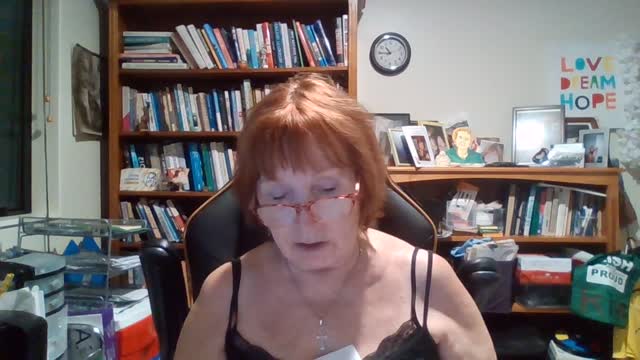RNZ Reported 12/7/2021 ‘US citizens and companies are buying NZ land for farming, forestry , wine making. Almost 180,000 hectares of farming land had been purchased or leased by foreign interest between 2010-2021. During the 11yr period almost 460,000 hectares, a little under the size of Auckland region shifted out of NZ control through purchases, leases or rights to take forestry. Control of another 178,000 ha. Of land was sold to international buyers for forestry operations. These figures are from an RNZ analysis of OIO data carried out as part of the series ‘Who’s Eating New Zealand’. Foreigners, organisations & investment funds that are more than 25% foreign owned must get consent from OIO before purchasing sensitive land, significant business assets or fishing quota. RNZ revealed 17/10/2019 the 4 largest private land owners in NZ, which are all foreign owned forestry companies. As follows:-
TAUMATA PLANTATIONS–own 101,854 hectares whom also purchased Carter Holt Harvey Forests which is owned by several overseas investment funds & banks. The largest shareholder is Manulife a major Canadian Insurance Company. In Oct 2016 Palisade Investments Partners Sydney closed the sale on interests of Taumata Plantations Ltd to Manulife. Taumata’s assets exceeded $1.8 billion. Palisade’s director said the company had achieved a sale at an attractive price. Taumata has just achieved record profits from the high harvest of strong timber prices. In 2021 Hancock Natural Resource Group adopted Manulift Investment Management brand in NZ, therefore their forestry operation now operate under Manulife Investment Management (NZ) Ltd.,(MFM) NZ. As of 30/7/2022 Manulife manages over 213,000 hectares of plantation forestry in NZ on behalf of 3 clients. These clients are located in Northland, Auckland, Waikato, Bay Of Plenty, Manawatu-Wanganui and Hawkes Bay regions.
HANCOCK NATURAL RESOURCES specializes in Global Farmland and Timber portfolio development and management, there parent company headquarters is in Toronto. They are head of global agriculture investments that expands markets worldwide in timber and ag-business. They manage a portfolio of 6 million acres of timberland located in the US, Canada, New Zealand, Australia, Brazil & Chile. Also 400,000 acres of farmland properties in US, Canada, Chile and Australia.
THE MALAYSIAN TIONG FAMILY GROUP OWN 77,686 hectares. They own forestry, media, property assets worldwide. Land holdings in NZ include their subsidiaries- Ernslaw One Forests, NZ King Salmon, the property & land development company Neil Group, Talus Industries, LumberBank, Winstone Pulp NZ (International), Oregon Nurseries, Innova Products. The Tiong Family Group subsidiary is the Oregon Group which is an Investment Holding Corporation. RNZ reported 20/9/2018 The Tiong Family Group were to blame for tonnes of debris that washed up on Tolaga Bay, they had been fined twice before for illegal logging overseas. RNZ reported that it had taken OIO 9 yrs to realise this.
TIONG FAMILY GROUP(Hikirangi Forest Farms): Tiong Group also own Samling’s Group Hikurangi Forest Farms. The owner also owns Samling’s Group Hikurangi Forest Farms and another forestry company in Tolaga Bay, this was granted 24 consents to buy sensitive land in NZ between 2005-2017 even though the company faced accusations of environmental and human rights abuses since 2004. Samling’s subsidiaries namely Barama Company was also fined for illegal logging in Guyana and fined. It was fined again in 2008. Samlings Palm Oil operations in Myanmar were accused of illegal deforestation indigenous land grabs & environment abuses by human rights groups in Myanmar. OIO said they were aware of reports of the company’s practices in Myanmar but had not verified them, saying it only became aware of illegal logging fines in 2017. The Overseas Investment Office (OIO) decided not to act on information as to Samling’s, they considered the fine was too long ago and limitation issues, far too long to act on information alone, Land Information NZ Overseas Investment Office manager said. Yes this could have forced the sale of Samling’s assets.
Tiong Family Group (Ernslaw One) : Ernslaw One is another of Tiong’s company’s also implicated in the Tolaga Bay flooding has continued to buy sensitive land in NZ, despite owners facing allegations of environmental and human rights abuses abroad. Ernslaw One is one of the three companies investigated by Gisborne District Council as to flood in June.
The Founder of Tiong Family Group is Tan Sri Tiong King he has made his fortune in forestry and palm oil plantations. Queen Elizabeth awarded him an environmental award., this angered Prince Charles as the Tiong Family Group had been alleged involved in environmental and human rights abuses abroad.
Tiong Family Group (Rimbunan Hijau: Tiong) This is another logging company owned by the Tiong Family Group which faces accusations of illegal operations, environmental and human rights abuses in Papua New Guinea and Malaysia, documented by Greenpeace in 2004 and more recently by Oakland Institute. Published report dated 3/3/2016 entitled ‘The Great Timber Heist’ Papua New Guinea. Referred to massive tax evasion, financial misreporting by foreign logging companies of millions of dollars. Named 16 subsidary members of the largest logging firm in Papua New Guinea… namely Malaysian Multinational company Rimbunan Hijau Group. The government failed to take action, the Commission of Inquiry into special Agriculture and Business Leases found widespread fraud, corruption, a lack of consultation with local communities where the logging took place. NOTE: NZ Overseas Investment Office grants 24 consents Tiong owned companies since 2005 to purchase sensitive land in NZ.. Both Tiong Group owned Samling and Rimbunan Hijau were named as irresponsible palm oil producers by Greenpeace.
TIONG FAMILY GROUP ENVIRONMENTAL & HUMAN RIGHTS ABUSES:-Multiagency Report on 10th Nov 2014 confirmed that police were working for Rimbunan Hijau that were brutaliing communities in SABL areas. The investigation was undertaken by government officials and civil society organizations whom confirmed allegations of continuous brutality and human rights violations by police personnel operating on behalf of Rimbunan Hijau inside two Special Agriculture and Business Lease areas in the East Britain Province of Papua New Guinea. Instances of violence included brutal assaults with tree branches that rendered victims unconscious, locking villagers in shipping containers for days on end, attacks by police on villagers with fan belts, rifle butts, and toe capped boots. Forcing villagers to spend the night lying in the rain on felled logs and forcing them to drink polluted water. Police were found to have forced various groups of youths and landowners to sign agreements pledging not to resist logging operations on their land even though the people had not consented to the logging, this was a breach of their constitutional rights and human rights. Police forced various people to make compensation payments in cash to the logging company. The fact finding mission stated the police were operating at the instigation of the Malaysian logging company Rimbunan Hijau, that was found to the a serial offender in PNG when it came to using police to brutally abuse local communities. It was found that police were flown into the area and were being deployed in the hire and care of the logging company. This report was publicly released in Feb 2013.
Rimbunan Hijau hired subsidiary Gilford Ltd., with the intention of preventing landowners from protesting against the companies operations. The Commission of Inquiry into the leases of the logging company covered more than 5 millions ha in total, unlawful. They found widespread abuses in developments of leases, failures to follow the process and requirements in the Lands Act, failure to secure informed consent from the local communities. The Commissions finds was accepted by the Prime Minister and endorsed by the National Executive Council, whol ordered many of the leases to be revoked. At the time of this publication this action had not been implemented and endorsed by the National Executive Council..
TIONG FAMILY GROUP GRANTED MORE THAN NINETY CONSENTS IN NEW ZEALAND: – Over a period of 20 years for companies owned and controlled by the Tiong Family Group. Overseas Investment Office spokesperson said “For OIO to take enforcement action after consent has been granted for any breach of good character it would be needed to be proven the person is not fit to hold an asset- We need to consider the nature of the allegation and public interest in taking action”. It was reported by Campaign Against Foreign Control of Aotearoa (CAFCA) that the OIO good character test was not rigorous enough.. “To prove companies are of a good character usually only one NZ Lawyer has to sign a bit of paper certifying they are of a good character”. Council of Trade Unions spokesperson said “the test apples to individuals, not the company itself”. No action can be taken under the current law.
NEW FOREST ASSET MANAGEMENT: is an Australian based management company owns 77,465 hectares of land in New Zealand, also operates several investment funds in NZ. RNZ reported that OIO were investigating subsidiary’s purchases, this resulted in a formal warning-$80,000 Charity donation and $20,000 Costs. The Sydney based company is reported as eyeing up trillions of dollars of opportunities in 20/5/2022, the company plans to manage $25 billion of forestry assets by 2030 which could well become trillion dollar assets as they had been jointly acquired by Japanese giants Mitsu and Nomura, thus signalling rapid growth of their forestry fund, making it the second largest asset manager globally in forestry. The company referred to climate solutions, sustainable materials. They manage forestry assets in Australia and New Zealand, North America, Africa- derive returns from productive timber, appreciation of land value and carbon mitigation. David Brand CEO said “there is potential of trillions of dollars to be made out of carbon pricing also shifting from plastic to paper, also capital appreciation of land. (Source of information -Financial Review)
MATARIKI FORESTS (RAYONIER) is based in the US, was formed in 2005 through the acquisition of Carter Holt Harvey Forests.as well as the purchase of Rayonier Forestry assets, they remain an investor in managing Matariki Forests. An Australian company Waimarie Forests Pty own the other half shareholding. Rayonier Inc is the 3rd largest forestry company in NZ, owns 120,000 ha.of plantations on 166,000 ha of land base. When it originally purchased its first forest in 1991 it was initially a log export operation. It has now quadrupled in size expanding log trading operations in NZ and Australia.. Rayonier business activities include:- timberland management and the sale, entitlement of real estate in land, they own manage land in North America & NZ, are involved in leasing properties for hunting, mineral extraction and cell towers. Their headquarters are in Yulee, Florida USA.
Rayonier Court Case In Atlanta: Pollution of the Altamaha River that flows to Darien on the Atlantic Coast. Their pulp and paper mill in Jessop Sth East Geogia was discharging, dumping approc 60 gallons of waste water aa day into the river. Conservation groups stated that the river was used for swimming, fishing, kayaking. The river smelt of a bad odour and looked coloured. Rayonier responded saying -they had spent millions of dollars over the years on their discharge system. The court allowed them to continue with their waste water permit. The Rayonier plant manufacture bleached wood pulp used in plastics, cigarette filters, cosmetics and other products, it’s the largest such factory in the world.
PORT BLAKELY is US owned 35,889 ha.in New Zealand. US owned.
SUMUTOMO FORESTRY. A Japanese forestry group owns land in Nelson and Tasman 25461ha
JUKEN NZ LTD., Japanese forestry investment company (WoodOne) their forests are in the Wairarapa and near Gisborne where it owns a mill-12435 hectares.
CORISOL NZ LTD.,Purchased from Ngai Tahu in 2011. ., A Swiss owned investment company that purchased forestry land -18,231 ha.
NELSON FORESTS LTD., Owned by Australian Forestry Investment Company- 18135 hectares, purchased the company and land from another foreign owned company.
SOUTHLAND PLANTATION FORESTRY CO.,LTD., 13366 hectares. Ownership of this Sth Island forestry land is split between three major Japanese companies -Fuji Xerox, Itochu Corporation and Oji Holdings.
OCEANA GOLD NZ LTD.,Australian owned company 13,682 hectares. Owner-operator of Waihi Gold Mine. .
GREENHEART MANAKAHIA FOREST LAND LTD.,Hong Kong based investment company owns forests in Northland 12558 ha.
CHINA FORESTRY GROUP NZ have various site from Wellington to Te Kuiti. Related to Forest360, operates out of every port in NZ. Forest 360 has a corporate structure. Took over the Remutaka Forest. Main business includes forest ownership, harvesting, transportation, sales and export for wood products, development of forest resource and storage logistic services.
The China Forestry Group company originally set up nine enterprises under the State Forestry Administration 1996, started operating in 2001. The corporation is engaged in fast growing high yield plantations, production, processing and export of wood products and forest seedlings. It also provides a forest tourism service as well 4.as fire fighting equipment. Subsidiaries of the corporation have six wholly owned subsidiaries in China, holding more than 70 enterprises altogether, which have set up production bases, businesses in NZ, Russia, Singapore, Burma and other countries. China Forestry Group own 24 forests in New Zealand 22,000 hectares of plantation on 29,000 hectares of land. Website: https//cfgcnz.co.n. Headquarters Auckland CBD, Described as Type being – Government.
SYNLAIT MILK:ACQUIRED THE NZ DAIRY COMPANY: For $56.5 million. China Bright Food, a Shanghai based State owned food industry conglomerate is the biggest shareholder of Synlait Milk. The largest shareholders are Bright Dairy Holdings Ltd (39.1%), Friesland Campina (9.9%) and Mitsui & Co NZ Ltd., Synlait have manufacturing sites in Canterbury, Auckland and Pokeno, its admin office is in Christchurch. They have a Research and Development Centre in Palmerston North and the Talbot Forest cheese factory in Temuka. Synlait export specification for infant formula powder using Bright Dairy’s distribution and marketing expertise to sell it to China. Bright Dairy is China’s third largest dairy company by volume, owning 210 farms in China and sources milk from another 500. Owns 23 processing factories, is the worlds largest yoghurt factory.
Synlait Sacked Lee Williams (PUBLICALLY REPORTING OF HE PUAPUA)- Stuff NZ referring to allegations of Lee Williams being a ‘white supremacist’ 24/5/2021. Referred to Lee Williams attacking Maori Party MP Rawiri Waititi and Willie Jackson by stroking fear as Lee Williams was determined to bring the He Puapua Report to the publics attention. Synlait responded they take these matters seriously. Lee Williams responed that He Puapua creators wanted to cancel and destroy him for telling the truth.. Lee was suspended from his job whilst Synlait investigated. Lee Williams lost his Westpac Personal Bank Account and his job at Synlait.. In 2020 Synlait started distributing plant based milk products domestically and in Sth East Asia also Australia.. They have increased their plant based food manufacture which they call healthier farming practices.. Ambient drinks, creams, butter which is plant based.
OTHER: NZ FONTERRA DAIRY COMPANY –(HIGH NITRATE CONTAMINATES) Fonterra NZ owns 700 parcels of land across NZ. RNZ published several articles on Fonterra’s 29 Ghost Farms across NZ, that are used to pipe their waste water for cleaning factory equipment into farms they had purchased in rural areas. This waste water was sprayed onto the land. Neighbouring farms were affected when this contaminated waste water leached into bores on neighbouring farm properties. Nitrate levels were higher than that that required by farmers, but this was overcome because Fonterra call this ‘Nutrient Management’
TOP FIVE MAORI/IWI HOLDINGS:-
Ngāi Tūhoe (243495 hectares):Includes 209,000 ha that was formerly Te Urewera National Park. Iwi settlement with Crown 2013 gave Te Urewera legal person-hood with a trust board made up of Iwi and Government.
CNI Holdings Ltd., -126,147 hectares. CNI Holdings is made up of eight central North Island Iwi: Ngai Tuhoem Ngati Manawa, Ngati Tuwharetoa, Ngati Whakaue, Ngati Whare, Ruakawa and affiliate Te Arawa Iwi Hapu. Includes large amounts of forests.
Ngati Tuwharetoa – 113,414 hectares. Iwi multiple trusts own forests and other land in the central North Island. The Iwi own the bed of Lake Taupo. (RNZ excluded bodies of water and underlying land in their analysis)
Ngai Tahu– 102,136 hectares. One of the first Iwi to settle with the Crown, is the largest landowner in the South Island after the Crown
Proprietors of Mangata Blocks 44,663 hectares. A mixture of Iwi based in Tairawhiti on the East Coast of the North Island covering about 3,000 shareholders. Land includes 15,000 native forest, some exotic forest, farmland & vineyards.
TOP FIVE LAND OWNING PUBLIC ENTITIES:= Does not include the Crown. RNZ Analysis found the Crown own at least 6.3 million hectares.
Wellington Regional Council 49,244 hectares. Owns and manages several large forest parks including Orongorongo, Akatarawa, Kaitoke Forest Parks.
Auckland Council – 48,220 hectares, land holdings include large parts of Waitakere and Hunua Ranges.
University of Canterbury – 40,302 hectares. The university owns farm and research field stations across the South Island.
Dunedin City Council- 38,356 hectares includes council owned ‘City Forests Ltd.,’ which owns Flagstaff & Ross Creek Forests.
University of Otago – 19,030 hectares, owns large areas of land endowed to it by the government.
Note much of this information was analysed by RNZ by using Land Information NZ Data. (Did not include some land transfers that were documented in LINZ Database). RNZ used information from the ‘Companies Office’. RNZ followed a similar methodology to one developed by Auckland Council researchers. Bodies of water & roads have been excluded from the database along with lease titles.
https://www.ruralnewsgroup.co.nz/dairy-news/dairy-general-news/ghost-farms-actually-used-to-grow-crops-using-factory-water
https://www.greenpeace.org/aotearoa/press-release/fonterra-implicated-in-deforestation-and-human-rights-abuses/
https://www.ajc.com/news/state–regional-govt–politics/georgia-judge-says-clean-altamaha-river/4dMVeDdBNbuJWvgud8YmhJ/
https://www.bizdb.co.nz/company/9429040630588/
https://www.oregongroup.co.nz/
https://www.rnz.co.nz/news/in-depth/401186/nz-s-top-50-private-landowners-revealed
https://www.rnz.co.nz/news/whoseatingnewzealand/446687/us-buying-up-our-primary-industries
https://www.manulifeim.com/timberland-agriculture/global/en/property-management/timberland-operations/new-zealand
https://www.afr.com/companies/financial-services/sydney-forestry-fund-eyes-trillion-dollar-opportunity-20220519-p5amtf
https://www.ajc.com/news/state–regional-govt–politics/georgia-judge-says-clean-altamaha-river/4dMVeDdBNbuJWvgud8YmhJ/
https://www.lowyinstitute.org/the-interpreter/putting-halt-great-timber-heist-papua-new-guinea
https://actnowpng.org/content/rimbunan-hijau-found-guilty-intimidating-threatening-and-harassing-media
https://actnowpng.org/blog/multi-agency-report-confirms-police-working-rimbunan-hijau-brutalize-communities-sabl-areas
...






